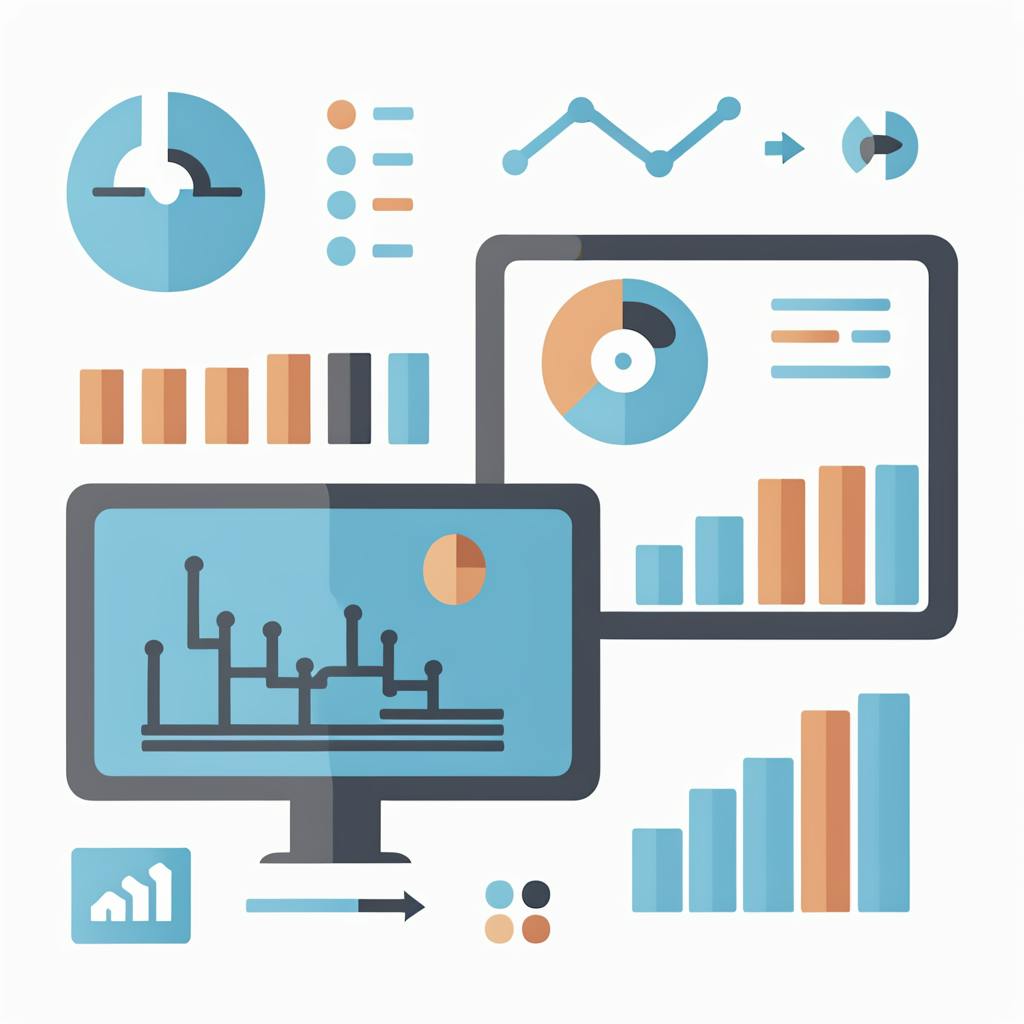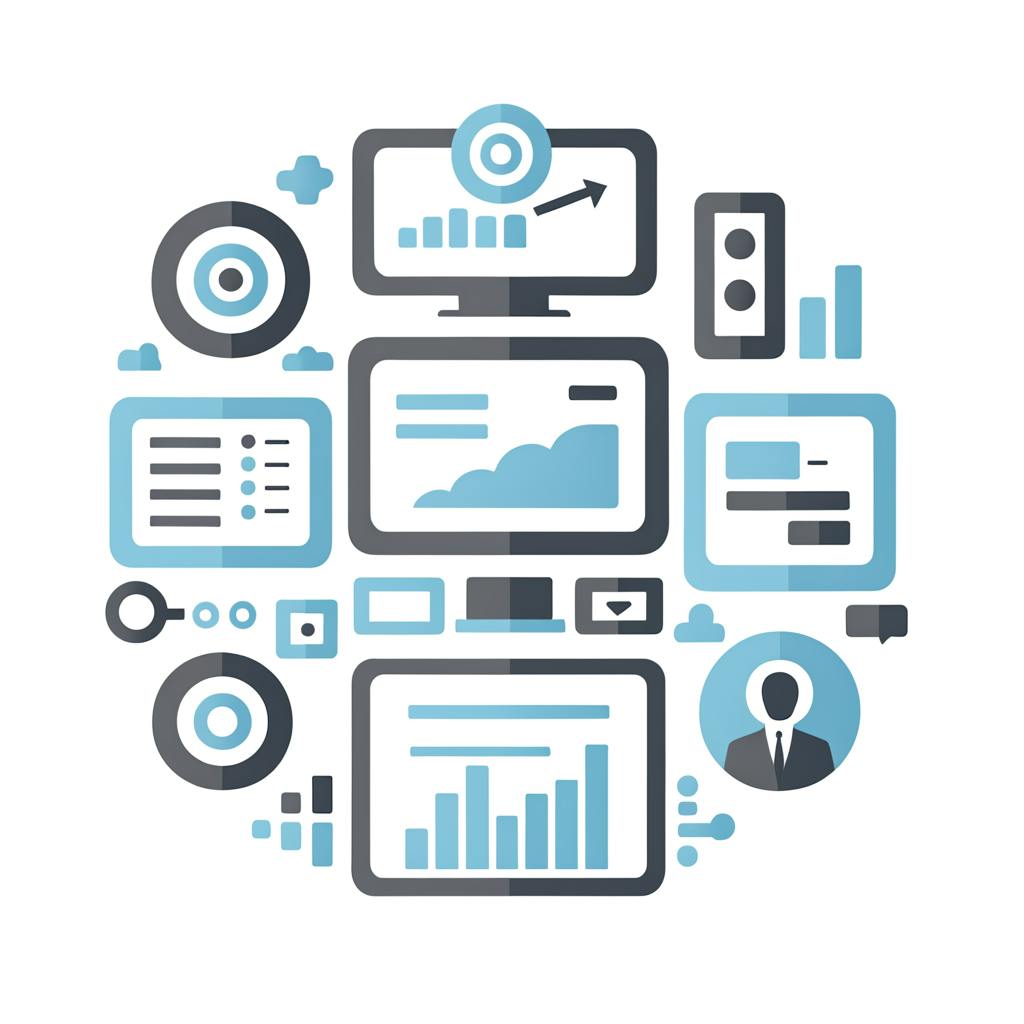In today's rapidly evolving digital era, the ability to decipher digital analytics metrics is no longer a mere skill—it has become a critical proficiency for any business aspiring to remain competitive. Digital analytics metrics are akin to a navigational tool, offering crucial insights into user behavior, website performance, and the effectiveness of marketing strategies. By effectively interpreting these metrics, businesses can steer through the complex digital marketing landscape with informed precision. However, given the vast array of data available, deciphering these metrics requires not only analytical skills but also a strategic approach grounded in industry expertise.
Understanding the Basics of Digital Analytics Metrics
Digital analytics metrics are the quantifiable measures used to evaluate and optimize digital marketing initiatives. These metrics range from straightforward metrics such as page views and bounce rates to more sophisticated measures like customer lifetime value and conversion paths. A thorough understanding of these metrics is essential for accurately analyzing user behavior, honing marketing strategies, and ultimately driving business success.
To delve deeper, it's important to recognize that these metrics serve as the heartbeat of digital marketing efforts. They provide a clear indication of what's working and what isn't, allowing businesses to pivot and adapt their strategies accordingly. Moreover, understanding these metrics helps in crafting personalized user experiences, which are increasingly becoming the norm in digital interactions.
Why Are Digital Analytics Metrics Important?
- Informed Decision-Making: Digital analytics metrics provide concrete data that can inform strategic business decisions. By understanding customer preferences and behaviors, companies can tailor their products and marketing messages to better meet the needs of their audience.
- Performance Measurement: Through digital analytics metrics, businesses can clearly see which strategies are effective and which are not. This allows for timely adjustments and improved resource allocation.
- ROI Calculation: By tracking specific metrics, businesses can calculate the return on investment for various marketing campaigns and channels, determining which efforts generate the best financial returns.
Furthermore, digital analytics metrics foster a culture of continuous improvement within organizations. By regularly analyzing these metrics, businesses can identify emerging trends and potential areas of growth before their competitors, ensuring they stay ahead in the market.
Key Digital Analytics Metrics to Focus On
While there are countless metrics available, mastering the art requires focusing on those that truly impact your business objectives. Here are some that stand out:
- Conversion Rate: Conversion rate measures the percentage of users who complete a desired action out of the total visitors. It’s crucial for understanding the effectiveness of a digital strategy in converting interest into valuable customer interactions.
- Traffic Sources: Knowing where your audience is coming from is essential. Break down traffic by organic search, referral, direct, social, and paid channels. Doing so helps identify which channels are most effective and need more investment.
- Customer Engagement Metrics: Metrics such as average session duration, pages per session, and bounce rate allow you to gauge how engaging your website content is. A high bounce rate could signal that your landing pages are not meeting user expectations.
- Customer Acquisition Cost (CAC): Understanding how much you’re spending to acquire each customer helps in evaluating the sustainability and efficiency of your marketing efforts.
- Return on Ad Spend (ROAS): This tells you the revenue generated for every dollar spent on advertising, which is crucial for managing ad budgets effectively.
In addition to these, businesses should also monitor metrics like Net Promoter Score (NPS) to gauge customer loyalty and satisfaction, and social media engagement rates to assess the resonance of their content across different platforms.

AI made with Stephanie Jagiello
Frequently Asked Questions about Digital Analytics Metrics
How can I track digital analytics metrics effectively?
Implementing platforms like Google Analytics or Adobe Analytics in conjunction with clear business goals ensures effective tracking. Customized dashboards and reports can provide a snapshot of key metrics that align with your objectives, offering a real-time view of performance.
To enhance tracking accuracy, businesses should consider integrating additional tools such as heatmaps to visualize user interactions on their websites or CRM systems to consolidate customer data across various touchpoints.
How do digital analytics metrics support A/B testing?
Metrics such as click-through rates, conversion rates, and engagement time help in evaluating variations in A/B testing, ensuring that businesses can make data-driven decisions based on user interactions.
For instance, by monitoring the performance of different page designs or content pieces, businesses can identify which variations lead to higher engagement and conversions, enabling them to optimize their digital assets effectively.
Can digital analytics metrics predict future trends?
While metrics mainly analyze current and past data, they can be used to forecast trends by identifying patterns and anomalies in user behavior, offering insights into future customer needs and market directions.
Advanced predictive analytics models can be employed to harness these metrics, allowing businesses to anticipate shifts in consumer preferences and adapt their strategies proactively.
Commonly Used Digital Analytics Metrics
Digital analytics metrics offer insights into various aspects of a website or digital marketing campaign. Some of the most commonly used metrics include:
- Page Views: The total number of times a page on your website is viewed. This metric helps measure overall website traffic.
- Unique Visitors: The number of distinct individuals visiting your website over a specific time period. It helps understand the audience size.
- Bounce Rate: The percentage of visitors who leave your website after viewing only one page. A high bounce rate may indicate issues with the landing page or irrelevant traffic.
- Average Session Duration: The average amount of time a user spends on your website during a single session. Longer durations often indicate engaging content.
- Click-Through Rate (CTR): The percentage of users who click a specific link or ad compared to the total number of users who view it. It's crucial for evaluating the effectiveness of digital marketing campaigns.
In addition to these, businesses should also consider tracking metrics like customer retention rates to understand the effectiveness of their loyalty programs, and site speed metrics to ensure optimal user experience.
How can mastering digital analytics metrics improve my business?
Mastering digital analytics metrics can significantly improve your business in various ways:
- Better Decision-Making: By understanding user behavior and preferences, you can make informed decisions about website design, content, and marketing strategies.
- Enhanced User Experience: Analytics reveal areas where you can improve the user experience, leading to increased satisfaction and loyalty.
- Optimized Marketing Strategies: By evaluating the performance of different channels and campaigns, you can allocate resources more effectively, resulting in higher ROI.
- Increased Conversion Rates: By identifying barriers in the conversion funnel, you can implement changes to improve conversion rates and revenue.
- Targeted Content Development: Understanding which content and topics perform well helps you create more relevant and engaging content. This is especially important in content creation for digital marketing, where producing the right kind of content can boost engagement, drive traffic, and support overall business goals.
Moreover, by leveraging analytics, businesses can foster innovation by identifying unmet customer needs and exploring new market opportunities.

AI made with Stephanie Jagiello
Why is interpreting digital analytics metrics an important skill to have?
Interpreting digital analytics metrics is essential as it transforms raw data into actionable insights. Here’s why this skill matters:
- Informed Strategy: Effective interpretation allows you to align your strategies with actual user behavior and market trends.
- Problem Identification and Resolution: By interpreting metrics, you can pinpoint issues like high bounce rates or low conversion rates and address them promptly.
- Performance Tracking: Interpreted data offers a clear view of your performance over time, helping you track progress against your business goals.
- Competitive Advantage: Businesses that can quickly interpret and act on analytics data are better positioned to outmaneuver competitors.
- Tailored Customer Experiences: With precise interpretation, you can better understand customer needs, leading to more personalized experiences.
Additionally, cultivating this skill within your team can lead to a data-driven culture, where every decision is backed by empirical evidence, fostering confidence and accountability in strategic planning.
What resources can help me master the art of interpreting digital analytics metrics?
There are several resources available to enhance your skills in interpreting digital analytics metrics:
- Online Courses and Certifications: Platforms like Coursera, Udemy, and Google Analytics Academy offer courses tailored to digital analytics and metric interpretation.
- Books and eBooks: Books such as "Web Analytics 2.0" by Avinash Kaushik provide in-depth knowledge and practical insights into web analytics.
- Webinars and Workshops: Industry webinars and workshops offer live learning experiences and opportunities to engage with experts.
- Google Analytics Help Center: A comprehensive guide to using Google Analytics effectively, including interpreting various metrics.
- Professional Networking Groups: Joining groups on LinkedIn or local analytics meetups can provide networking opportunities and shared knowledge.
Beyond these, engaging with industry blogs and podcasts can keep you updated with the latest trends and best practices in digital analytics, ensuring your skills remain relevant and cutting-edge.
Mastering the art of interpreting digital analytics metrics offers a pathway to refining your business's digital strategy and achieving long-term success. By leveraging the resources and techniques mentioned above, you can elevate your analytics skills and drive meaningful results for your organization.
In conclusion, the ability to interpret digital analytics metrics is not just about understanding data, it's about transforming information into impactful business strategies. As businesses continue to navigate the complexities of the digital world, those who can harness the power of analytics will undoubtedly lead the charge toward innovation and success.

